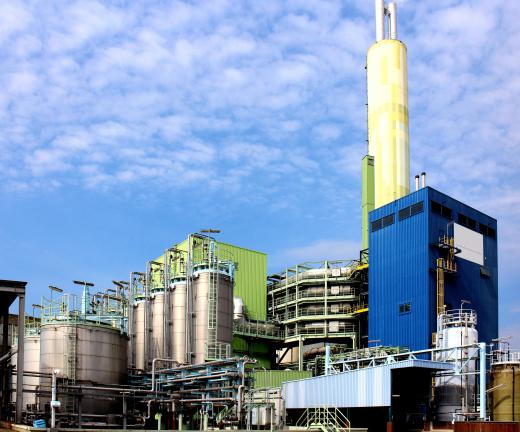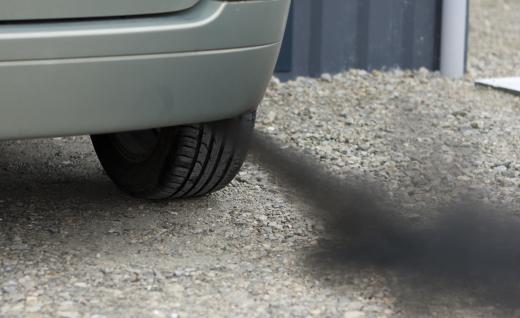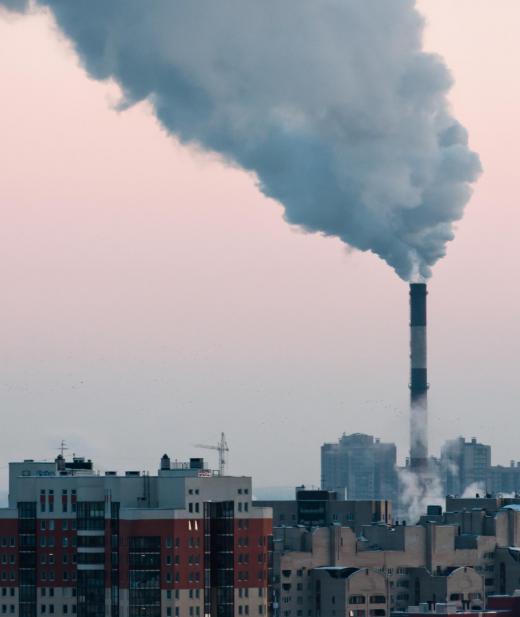The best methods of air pollution control often depend on the individual or industry using them, but in most cases they focus both on reducing pollution at its source and minimizing the overall effects on the environment. Factories and other industrial complexes that emit a lot of toxins into the air sometimes find that using active carbon can be an effective way to filter air before it is released into the atmosphere, and biofiltration — a process that uses natural bacteria and fungi to reduce emissions — often works in a similar way. Building cleaner car engines can help reduce traffic-related emissions, as can different behavioral and monetary incentives for commuters to reduce the time they spend driving. Different countries and regions have different standards and best practices, but in most cases the core goals of air pollution schemes are similar.
Activated Carbon

One of the easiest ways to control air pollution involves air filtration, and one of the most widely available filters works with the use of activated carbon. Companies and businesses that produce a lot of pollution, whether as a byproduct of some sort of industrial production or simply as a facet of running large structures, often equip their smokestacks or exhaust towers with carbon filters. The carbon acts as an adsorbent, essentially trapping all pollutants within a specific molecular weight range. The air that does escape is usually a lot cleaner. It may not be free of all pollutants, but it is usually much improved and is generally safer to breathe, too.
Biofiltration

Not all air pollution comes from single towers or chimneys, though, which can make carbon-type filters less effective. Agricultural centers, waste water management facilities, and food manufacturing plants are among those industries that may have larger contamination issues to deal with; pharmaceutical companies who produce chemical compounds and drug cocktails in large production facilities may also be concerned with air contamination and the potential escape of pollutants into the environment on a larger, wider scale. Biofiltration, a method of fighting air pollution with existing microorganisms and bacteria, often works really well in these and related situations.

This type of air pollution control system uses bacteria and fungi to dissolve pollutants organically. The organisms consume the chemicals and toxins that contribute to pollution and, in many cases, the smells that go along with them, converting things on a molecular level to carbon dioxide and hydrogen gas. While this method of air pollution control works rather well, it usually needs a large space in which to operate, and this isn’t always practical.
Targeting Car Emissions

Car engine emissions are responsible for a large portion of air pollution in most places. Hydrocarbons that are produced when gasoline burns escape into the environment and can deplete the Earth’s fragile ozone layer, among other things. One of the easiest ways for manufacturers to make a difference in pollution output is to change the way engines process and dispel exhaust. A catalytic oxidizer placed inside of car exhaust systems can go a long way towards reducing emissions. These tend to be rather expensive to install and maintain, however, and they don’t get rid of all emissions; some hydrocarbons still escape.

Electric cars and alternative fuels are another way to control air pollution from vehicles, and many auto manufacturers have experimented with models that burn different sorts of gasoline and so-called “clean fuels.” Reducing the amount of traffic is another tactic. Cities and localities often promote mass transportation by discussing its impact on air pollution, and many places offer tax credits and other incentives for people who commit to carpooling or otherwise reducing the amount of time they spend alone in their cars.
Jurisdictional Differences
Each country around the world has a different set of pollution standards, laws, and incentives. Within the United States, the Environmental Protection Agency is chiefly responsible for emissions control, while Europe has another set of standards entirely; China and India have unique regulations, too. Environmental experts often talk about air pollution as a global problem, though, and as such many believe that all countries across the world should have the same emissions standards. This way, air pollution can be managed more uniformly around the world. Coordinating such a large effort takes a tremendous amount of work, however, and is in many ways an on-going process.
